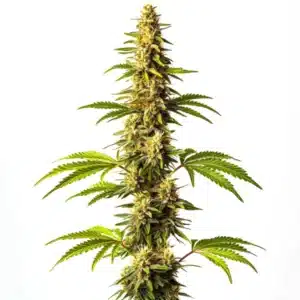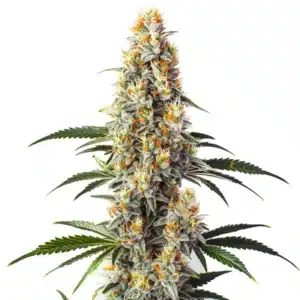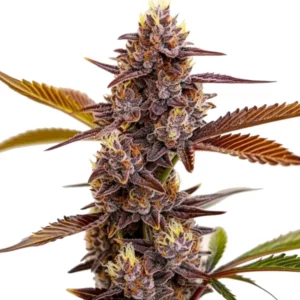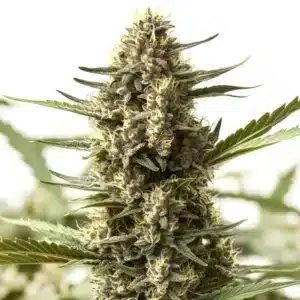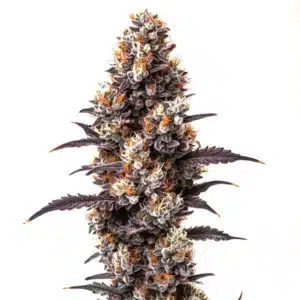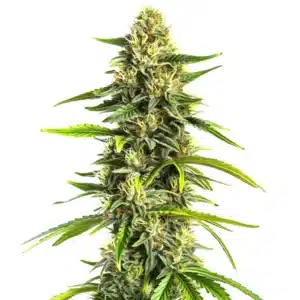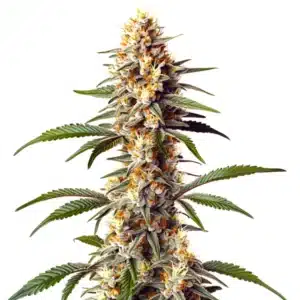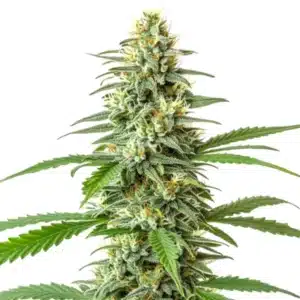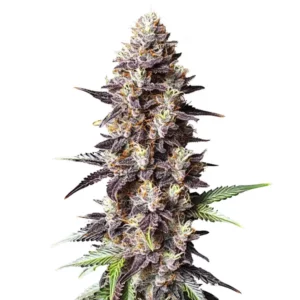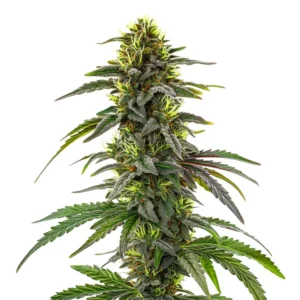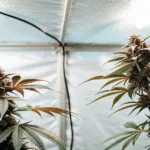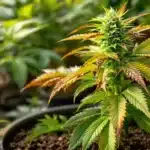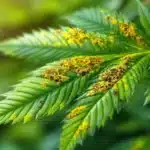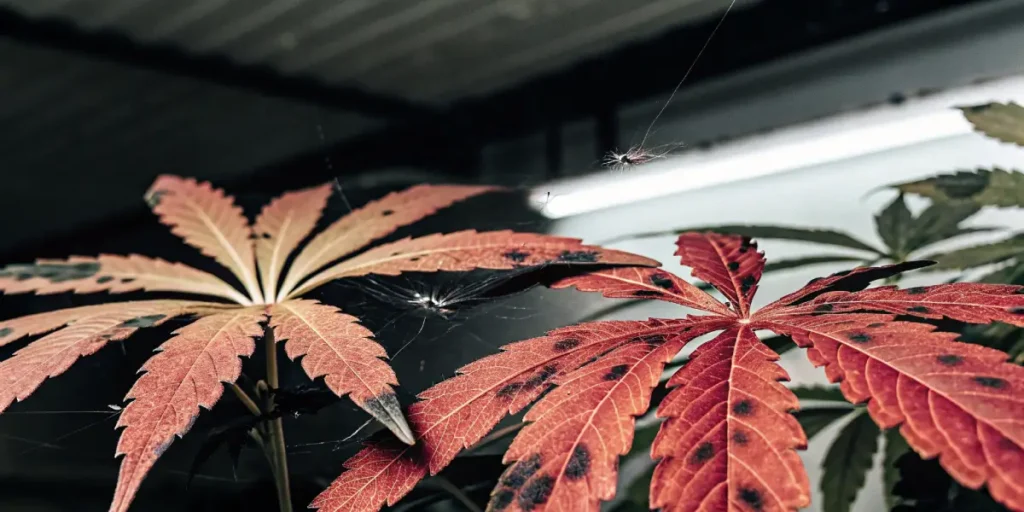
What Are Black Spots on Weed Leaves?
Black spots on cannabis leaves often appear due to several potential issues, such as fungal diseases, pest attacks, nutrient imbalances or shortages, and environmental stressors. Pinpointing the exact cause is essential to apply the right treatment effectively.
Imagine this: you’ve invested countless hours caring for your cannabis plants, meticulously watering, pruning, and adjusting your grow environment. Then, one day, you notice mysterious black spots on weed leaves. Panic sets in as questions flood your mind. Are these spots a sign of a serious disease? Will your plants survive? What can you do to fix it?
Recommended Strains
Super Critical
|
|
THC | 18% - 20% (Medium) |
|
|
Type | Feminized |
|
|
Yield | High |
|
|
Phenotype | 70% Indica / 30% Sativa |
Super Glue
|
|
THC | 16% - 19% (Medium) |
|
|
Type | Feminized |
|
|
Yield | High |
|
|
Phenotype | 60% Indica / 40% Sativa |
These black spots on weed leaves are not just blemishes they’re a sign that your plants are struggling. Understanding why these spots appear and how to address them is crucial for preserving your crop. By the end of this article, you’ll have the knowledge to tackle this problem head-on, ensuring your plants remain healthy and productive.
Common Causes of Black Spots on Weed Leaves
Fungal Infections
One of the most frequent causes of black spots on marijuana leaves is fungal infections. These thrive in humid and poorly ventilated environments, making cannabis plants particularly vulnerable. Fungi can weaken your plants, reducing their yield and quality if left untreated.
Black Spots on Weed Leaves – Signs of Fungal Issues:
- Black spots often surrounded by yellow or brown discoloration.
- Powdery or fuzzy residues near the affected areas.
- Leaves may feel soft, begin to wilt, or curl at the edges.
Black Spots on Weed Leaves – Common Fungal Culprits:
- Leaf Septoria: A fungal disease caused by the Septoria pathogen, which produces small black or brown spots that can spread quickly if untreated.
- Anthracnose: A fungal condition that results in dark lesions on leaves, especially during damp or rainy conditions.
Black Spots on Weed Leaves – How Fungal Infections Develop:
Fungi thrive in conditions where moisture and warmth are abundant. Overwatering, high humidity, or poor airflow in your grow space creates the perfect environment for these pathogens to multiply.
Pest Infestations
Pests are another common reason for black spots. As these insects feed on your plants, they can leave behind damage that appears as spots, streaks, or discoloration.
Key Pests That Cause Black Spots:
- Spider Mites: Tiny pests that pierce plant cells and leave dark spots or webbing on the underside of leaves.
- Thrips: Small, slender insects that scrape leaf surfaces, creating black streaks or spots.
- Fungus Gnats: While their larvae primarily affect roots, their activity can indirectly cause leaf issues.
Identifying Pests:
- Use a magnifying glass to inspect the undersides of leaves.
- Look for physical signs like webbing, bite marks, or visible insects.
Nutrient Deficiencies or Imbalances
Plants rely on a precise balance of nutrients to grow and thrive. When key nutrients are lacking, black spots can develop as a symptom of stress.
Nutrient Deficiencies Linked to Black Spots:
- Calcium Deficiency: Weakens the plant’s cell walls, leading to necrotic (dead) spots on leaves.
- Potassium Deficiency: Causes discoloration and blackened edges on leaves, often accompanied by curling.
- Phosphorus Deficiency: Produces dark blotches on lower leaves, particularly in older plants.
Environmental Stressors
Even if your plants are pest- and disease-free, environmental factors can cause black spots. Stress from poor growing conditions often manifests as leaf damage.
Common Stress Factors:
- Overwatering: Saturated soil can lead to root rot, which impacts the health of leaves.
- Excessive Heat or Light: Burns from intense light or high temperatures can appear as blackened patches.
- Poor Ventilation: Stale air increases humidity levels, promoting fungal growth.
Promos & Deals
How to Treat Black Spots on Weed Leaves
Diagnose the Problem
Before taking action, you need to determine the root cause. Examine your plants closely, noting the size, shape, and spread of the black spots. Use a magnifying glass to check for pests, and look for additional symptoms like yellowing, curling, or powdery residues.
Black Spots on Weed Leaves – Prune Affected Leaves
Removing damaged leaves is a crucial first step to prevent further spread. Be careful to avoid contaminating healthy parts of the plant.
How to Prune Effectively:
- Use sterilized scissors or pruning shears.
- Cut at least an inch below the affected area.
- Dispose of the removed leaves far from your grow space to prevent reinfection.
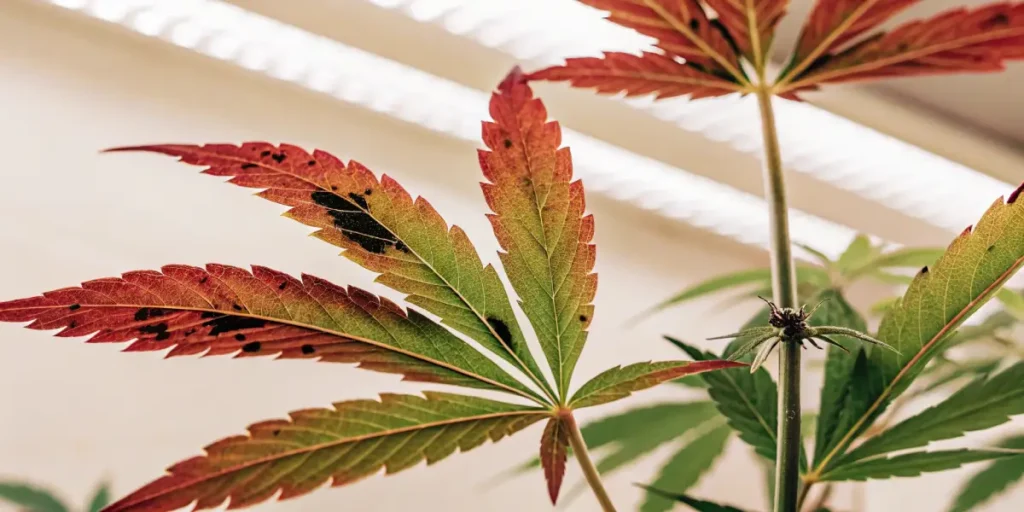
Black Spots on Weed Leaves – Optimize Your Growing Environment
Environmental adjustments can make a significant difference in plant health:
- Humidity: Maintain levels between 40-50% to discourage fungal growth.
- Temperature: Keep your grow area between 68-77°F (20-25°C).
- Ventilation: Use oscillating fans to improve airflow and prevent stagnant air.
Black Spots on Weed Leaves – Treat Fungal Infections
Fungicides are effective for combating fungal issues. Organic options like neem oil or potassium bicarbonate sprays are safe for cannabis plants.
Application Tips:
- Spray affected areas thoroughly, including the undersides of leaves.
- Repeat treatment every 7-10 days until symptoms disappear.
Black Spots on Weed Leaves – Control Pest Infestations
For pests, insecticidal soaps or natural predators like ladybugs can help eliminate the problem.
Additional Tips:
- Apply treatments during early morning or late evening to avoid burning leaves.
- Rotate pest control methods to prevent resistance.
Black Spots on Weed Leaves – Address Nutrient Deficiencies
Correcting nutrient imbalances can reverse damage and prevent future issues.
- Calcium: Add supplements or adjust soil pH to improve uptake.
- Potassium and Phosphorus: Use balanced fertilizers and ensure soil pH stays within the ideal range of 6.0-7.0.
Best Products to Combat Black Spots
Neem Oil Spray
An all-natural solution for both pests and fungi, neem oil is a must-have for cannabis growers.
Cal-Mag Supplements
If calcium or magnesium deficiencies are to blame, these supplements can restore balance quickly.
Fungicide Concentrates
Organic fungicides like Serenade or sulfur-based products are highly effective against fungal pathogens.
Insecticidal Soaps
Safe for cannabis plants, these soaps target pests without harming beneficial organisms.
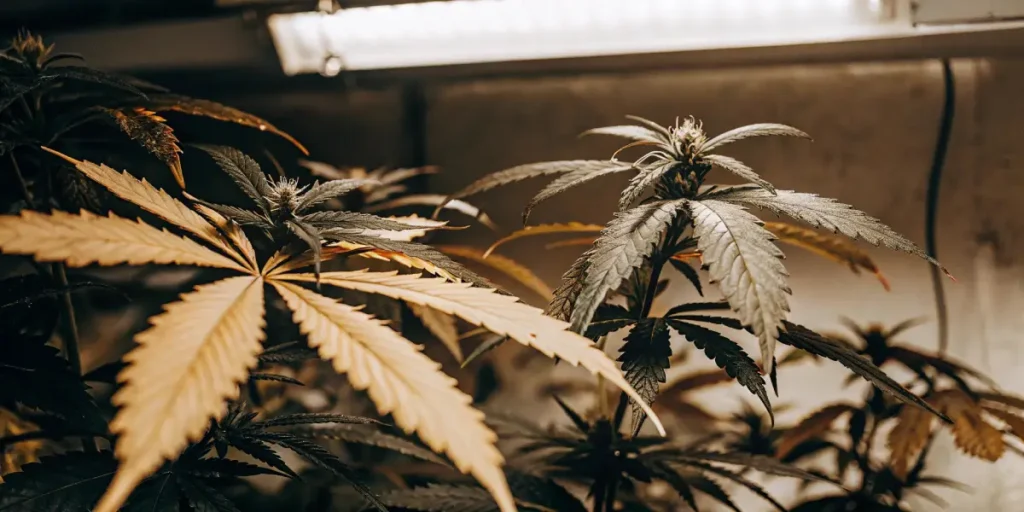
Preventing Black Spots on Weed Leaves
Regular Inspections
Check your plants daily for early signs of problems. Early detection can save your crop from extensive damage.
Maintain Optimal Growing Conditions
- Use a hygrometer and thermometer to monitor your grow area.
- Adjust lighting and watering schedules as needed.
Implement Proper Watering Techniques
- Water when the top inch of soil is dry to the touch.
- Avoid splashing water on leaves, as this can encourage fungal growth.
Quarantine New Plants
Isolate any new additions to your grow area for at least two weeks to ensure they are pest- and disease-free.
Invest in Disease-Resistant Strains
Choosing seeds bred for resilience can reduce the risk of black spots. Ask your supplier for recommendations on hardy strains.
FAQs About Black Spots on Weed Leaves
What causes black spots on weed leaves?
Black spots can be caused by fungal infections, pest infestations, nutrient deficiencies, or environmental stressors. Identifying the root cause is essential for effective treatment.
Are black spots on leaves harmful to the plant?
Yes, they can indicate underlying issues that, if left untreated, may weaken the plant, reduce yield, or even kill it.
How can I prevent black spots on my cannabis plants?
Regular inspections, maintaining optimal growing conditions, proper watering techniques, and using disease-resistant strains are key preventive measures.
Can I save a plant with black spots?
In most cases, yes. By identifying and addressing the root cause, such as using fungicides, pest control, or nutrient supplements, you can restore plant health.
Should I remove leaves with black spots?
Yes, removing affected leaves helps prevent the spread of disease or pests to healthier parts of the plant.


